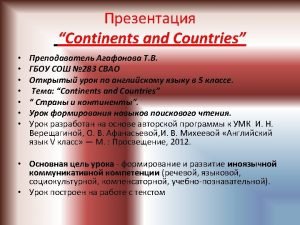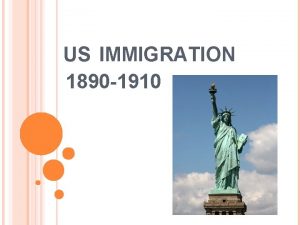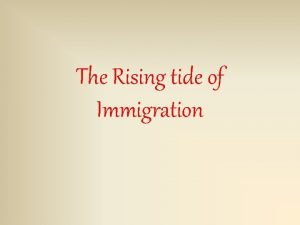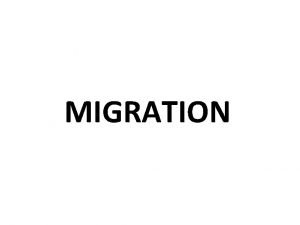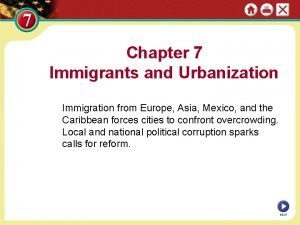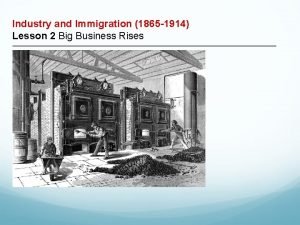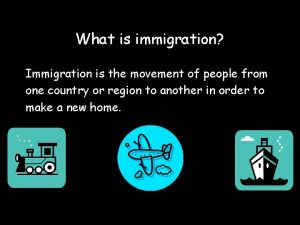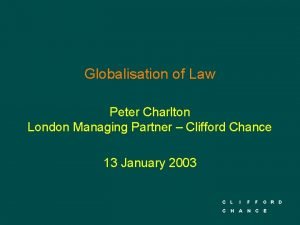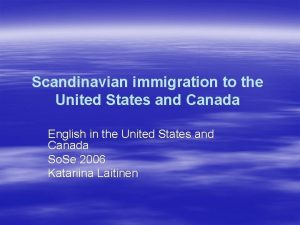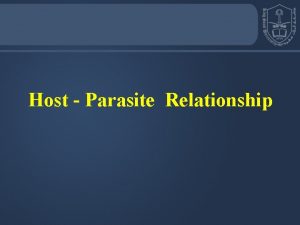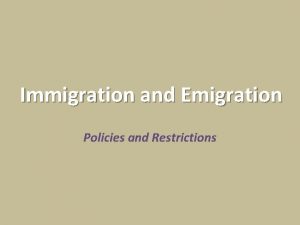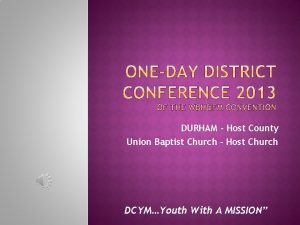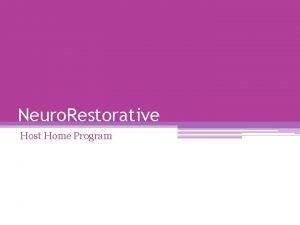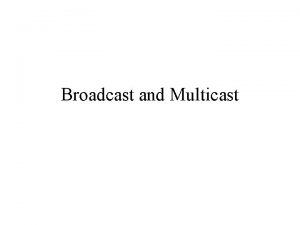Immigration Policies of Host Countries Countries use 2


















- Slides: 18

Immigration Policies of Host Countries • Countries use 2 main policies to control the arrival of foreigners seeking work • The US uses a quota system • In Europe and the Middle East, they permit guest workers

US Quota Laws • Quotas- maximum limit on the number of people who could immigrate to the S from each country in a 1 year period – First established in 1924 – Updated in 1965, and replaced with hemisphere quotas instead of country quotas – 1978, changed to a global quota of 290, 000, with a max of 20, 000 per country – Today, 620, 000, w/ max of 7% from one country

continued • Get more applications for immigration per year than the quota allows • Congress has set preferences – 480, 000 family sponsored immigrants – 140, 000 employment-related immigrants • Currently about a 5 year wait for a spouse to gain entry • Quotas do not account for refugees

continued • Brain drain- large scale emigration of talented people – In 2005, 84% of Haitians w/ a college degree lived abroad • 47% Ghana • 45% Mozambique

Temporary Migration for Work • Guest workers- citizens of poor countries who obtain jobs in W. Europe and the Middle East – Take low-status and low-skilled jobs that local residents won’t take – Low paid by European standards, but far more than could make at home – Helps the native country too • Lowers unemployment and large % of pay gets infused in local economy as money gets sent home to families

continued • Most guest workers in Europe come from N. Africa, the Middle East, Eastern Europe, and Asia

continued • Millions of Asians migrated in the 19 th century as time-contract laborers, recruited for a fixed period to work in mines or on plantations – many stayed after their contract was up

Distinguishing Between Economic Migrants and Refugees • The 2 groups are treated differently • Economic migratns must possess special skills or have a close relative already living their to be accepted • Refugees receive special priority in admission to other countries because of persecution from undemocratic governments – Read about Cuba, Haiti, and Vietnam p. 99 -101

What about refugees? • UN definition – A person who has well-founded fear of being persecuted for reasons of race, religion, nationality, membership of a particular social group, or political group. • UN reports 24 million refugees worldwide

What about refugees? UN definitions • International refugees: – Those who have crossed one or more international borders and are encamped in a country other than their own • Intranational refugees: – Those who have abandoned their homes but not their homeland

It is difficult to identify refugees. • No mention of natural/enviromental disaster • UN must distinguish between refugees and voluntary migrants before granting asylum. • Three general characteristics, individual or aggregate (collectively): – Most refugees move without any more tangible property than they can carry or transport with them. – Most refugees make their first “step” on foot, by bicycle, wagon, or open boat. – Refugees move without the official documents that accompany channeled migrations.

Regions of Dislocation • Sub-Saharan Africa – Several of the world’s largest refugee crises plagued Africa during the 1990 s and early 21 st century -8 million “official” refugees – Civil wars in Liberia, Sierra Leone, Angola, and Sudan – Hostilities between the Hutu and Tutsi tribes in Rwanda

Other regions of dislocation… • North Africa and Southwest Asia – Israel and the displaced Arab populations that surround it – Exhibits qualities that are likely to generate additional refugee flow in the future – The Kurdish population following the Gulf War (1991) – Taliban rule in Afghanistan – Afghanistan after the Soviet invasion during the 1980 s

Regions of dislocation continued… • South Asia – Pakistan accommodated forced emigrants from Afghanistan – Major refugee problem stems from a civil war in Sri Lanka

Regions of dislocation continued… • Southeast Asia – “Boat people” who fled communist rule in Vietnam – In the early 1990 s, Cambodia generated the region’s largest refugee flow – Today--largest number of refugees come from Myanmar (Burma)

Regions of dislocation continued… • Europe – After the collapse of Yugoslavia, over 1 million were displaced n South America n Colombian illegal drug violence, especially in rural areas

Cultural Problems Faced While Living in Other Countries • Citiznes of host countries are not always accepting of newcomers’ cultural differences – Immigrants are often used as scapegoats by local politicians to explain local economic problems

US Attitudes Toward Immigrants • The Germans and Irish had only mild prejudice against them because they helped expand the frontier • Russians, Italians, Poles, faced much more hostility after the frontier was closed – They were deemed less intelligent, less trustworthy, and more inclined to violence • Recent immigrants face many of the same prejudices today
 Deportation definition ap human geography
Deportation definition ap human geography Definitive host vs intermediate host
Definitive host vs intermediate host Decs order no. 11, s. 1987
Decs order no. 11, s. 1987 Metric sustem
Metric sustem What countries use customary system
What countries use customary system British sweets
British sweets Countries that use imperial units
Countries that use imperial units What is the immigration
What is the immigration What is this
What is this Difference between immigration and emigration
Difference between immigration and emigration Frank & delaney immigration law, llc
Frank & delaney immigration law, llc Klasko immigration law partners reviews
Klasko immigration law partners reviews Who were they
Who were they Immigration partnership winnipeg
Immigration partnership winnipeg Chapter 7 building vocabulary immigration and urbanization
Chapter 7 building vocabulary immigration and urbanization Industry and immigration lesson 2 big business rises
Industry and immigration lesson 2 big business rises What is immigration
What is immigration Immigration lawyer charlton
Immigration lawyer charlton How many states canada
How many states canada





